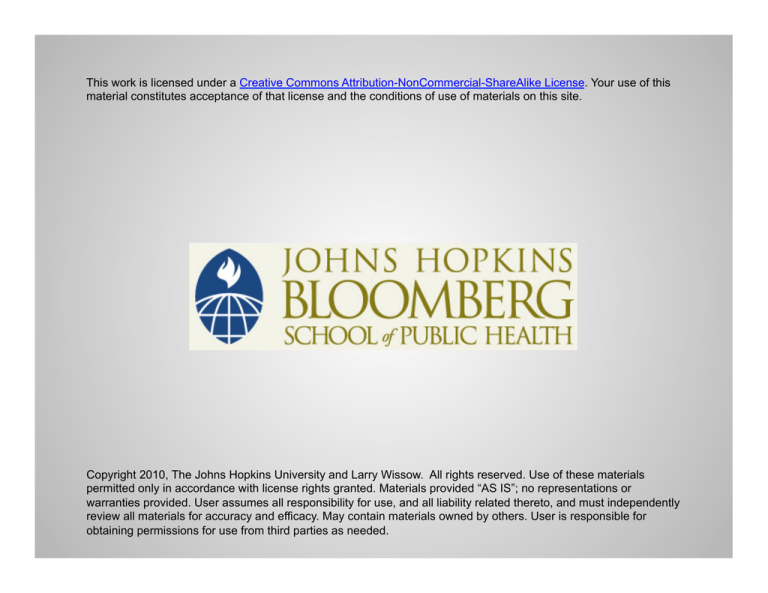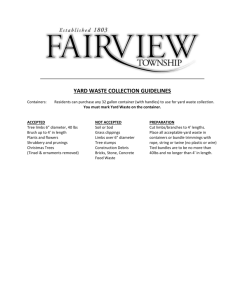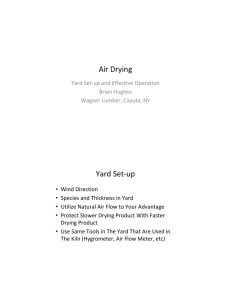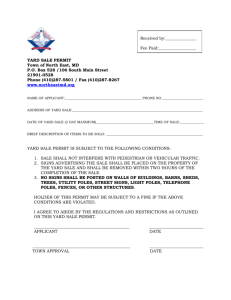
This work is licensed under a Creative Commons Attribution-NonCommercial-ShareAlike License. Your use of this
material constitutes acceptance of that license and the conditions of use of materials on this site.
Copyright 2010, The Johns Hopkins University and Larry Wissow. All rights reserved. Use of these materials
permitted only in accordance with license rights granted. Materials provided “AS IS”; no representations or
warranties provided. User assumes all responsibility for use, and all liability related thereto, and must independently
review all materials for accuracy and efficacy. May contain materials owned by others. User is responsible for
obtaining permissions for use from third parties as needed.
Community-­‐Level Theory and Prac6ce Integra6ng Social and Behavioral Theories into Public Health Berkman, Glass, Brissette, Seeman model
Characteristics of structural
interventions
• Relative to individual choice
– Some less dependent on individual decisions
to act
• Constrain choices
– Some add new choices
• Generally focus on “shifting the curve”
rather than changing the distribution
– Less attention to “bad apples”
Who is “targeted” in structural
interventions?
• Decision-makers
• “End users”
• Change their own choices and environment
• Empower them to advocate for themselves
• Communities
– How to define?
– How different from a “grass roots” group that
comes together around a particular issue?
Weijer and Emmanuel, Science, 2000;289:1142.
What are the characteris6cs of a strong community? Community capacity framework (Goodman et al., 1998) • Par6cipa6on and leadership • Skills • Resources • Community values • Sense of community • Social and inter-­‐organiza6onal networks (including means of communica6on) • Understanding of community history • Capacity for “cri6cal reflec6on” Why think about communities?
• Social justice
– Empower communities
• “Action research,” “critical consciousness,” “culture
of knowledge”
– “Targets” should have a voice
• Utilitarian ends
– Consideration of context more effective
• Access and substituted consent
– Western and other cultures
Kurt Lewin
1890-1947
The community perspec6ve • Organized around social units of iden6ty rather than disease or other interest categories • Emphasis on social analysis rather than (or in addi6on to) epidemiologic analysis • Goal of social change rather than social control • Recogni6on of community members’ role in issue selec6on • Asks “what are people’s mo6va6ons?” rather than “how can we mo6vate people?” • Focus on assets and weaknesses rather than problems and risks Community-­‐Based Par6cipatory Research CBPR is not one specific theory or methodology, but an overarching term useful for understanding the community-­‐based approach. Tenets include: • Community par6cipa6on • Coopera6on and co-­‐learning between community members and professionals • Process orienta6on toward capacity building and empowerment • Compromise between inves6ga6on and ac6on (Israel et al., 1998) Placed-participatory continuum
• Most common community roles
– Recruiting participants
– Design of studies
• Probably most important roles
– Data interpretation and development of
implications and significance
– (Cashman 2008)
Range of “community-based activities”
Research focus
Justice/action focus
Community placed
+++
-
CBPR
++
++
Community organizing
-
+++
Community Organizing “The process by which community groups are helped to iden6fy common problems or goals, mobilize resources, and in other ways develop and implement strategies for reaching the goals they have collec6vely set.” (Minkler & Wallerstein, 2002) Staged/cyclic approach
• Lewin’s action research
– Factfinding, action, reflection
• Organizing
– Listen
– Build relationships
– Challenge status quo
– Act
– Evaluate
– Reflect
– Celebrate
– Listen
The process
• Define it
– Agree on an issue, build consensus
• Analyze it
– Do homework in the library, web, etc.
• Document it
– Diaries, photos, films
– Track changes
The process
• Prioritize it
– Rank concerns
– Rank desired solutions
– Communicate the problem and the solution to
those in power
• Evaluate it
– Monitor the impact of any changes
Baltimore Environmental Justice in Transportation
Comm+Unity from http://ejkit.com
Kirk Ave. Bus Yard
Photo from Comm+Unity from http://ejkit.com.
Community concerns
• Bus yard is too close to homes
– It is 1 of 3 MTA bus yards located in/near
residential areas.
– Concerns about noise, impact of fumes on
respiratory conditions and cancer
– Concerns about property values
Analysis/findings
• Noise pollution tracked at bus yard:
– Announcements over loud speakers
– Engines running throughout day and night
– Recorded noise levels exceeded the
Baltimore City ordinance levels during both
day and night, nearly every day tested. Noise
levels were higher during night hours,
especially on weekends.
Analysis/findings
• Pollution
– Although the daily average of air pollution
didn’t exceed the federal standard, the 2 week
average indicates that the annual standard
may be exceeded.
– Related illnesses and doctor/ hospital visits
were documented and mapped.
• Property Values
– Property values are lower in the 1/4 mile
residential area surrounding the yard
Analysis/findings
• But, the yard does serve the community
– Some of the bus routes leaving from Kirk Ave.
directly serve the Midway Community.
• Of the 12 bus routes that leave the Kirk Ave bus
yard, 4 are within a 1/2 mile radius of Kirk Ave and
2 are within 1 mile.
– The presence of the yard helps make public
transit in the area better than it might be
• Thus, getting rid of the yard not best
option
Action/plans
• Noise and pollution reduction (hybrid
buses, new operational procedures, etc)
advocated over relocation
• Community should have ongoing,
structured, negotiations with MTA
regarding near-term and long-term
strategies
Key questions
• Where does the question come from?
• Who owns the data and why does this
matter?
• An essentially cross-cultural process
– Time scales
– Unstated assumptions
– Humble knowledge
– Who can be a bridge?
To what extent do community theories “work”? • Results of large-­‐scale community-­‐based health promo6on programs have o_en been modest (e.g., Minnesota Heart Health, Stanford Five City Project) • Disagreement exists about the extent to which these are actually community-­‐based • Beber results have been found in HIV research and with smaller-­‐scale interven6ons • Proponents emphasize the moral argument for community based research Effectiveness of community-based work
• Holder et al. (2000) multi-level community-based trial:
– Health problems addressed
• High-risk drinking
• Alcohol-related motor vehicle crashes
– Interventions
•
•
•
•
•
Server training
Training of off-premises licensed retailers
Enhanced roadside sobriety checks
Community mobilization (norms)
Use zoning to limit/restrict alcohol outlets
Effectiveness of community-based work
• Holder et al. community trials:
– Case/control study – three communities, three
controls
– Results
•
•
•
•
•
•
•
Overall prevalence of drinking did not decline
“Having had too much to drink” self-reports down 49%
Self-reported “driving over legal limit” fell by 51%
6% drop in driving after drinking crashes
10% drop in nighttime injury crashes
Assault injuries appearing in ER fell by 43%
All hospitalized assault injuries fell by 2%
Holder HD: JAMA. 2000;284:2341-2347.
Crashes: Nighttime Injury, Driving Under the
Influence (DUI) of Alcohol, and Daytime
View Figure 1 from Holder, H. D. et al. JAMA 2000;284:2341-2347:
http://jama.ama-assn.org/cgi/content-nw/full/284/18/2341/FIGJOC90970F1
Summing up
• Thoughts about communities and
community-based interventions and
research?
• Small group sessions – elements of “the
pitch”







